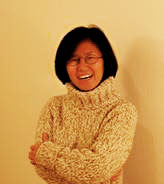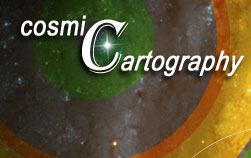|
Event Info
|
December 5, 2007 @ 7PM
- Enter at 220 South Columbus Ave
- Follow the YOU ARE HERE Red Dots
This event is free
- No reservations required
- First come first serve
- Doors OPEN at 6:30PM
|
|
|
 |
 | Public Event: COSMIC CARTOGRAPHY JOURNEY THROUGH THE UNIVERSE |
|
 |
GUESTS
- Jim Cronin, Noble Laureate, KICP, University of Chicago
- Young-Kee Kim, Fermilab Deputy Director, University of Chicago
- Josh Frieman, KICP, University of Chicago, Fermilab
- Andrey Kravtsov, KICP, University of Chicago
- Mike Gladders, KICP, University of Chicago
- Clem Pryke, KICP, University of Chicago
- Juan Collar, KICP, University of Chicago
- Lucy Fortson, Adler Planetarium & Astronomy Museum, KICP, University of Chicago
|
 |
 |
|  |
 |
|  |
 |
|  |
 |
 Professor Emeritus, Departments of Astronomy and Astrophysics, and Physics, and the College; Enrico Fermi Institute; Kavli Institute for Cosmological Physics
Professor Emeritus, Departments of Astronomy and Astrophysics, and Physics, and the College; Enrico Fermi Institute; Kavli Institute for Cosmological Physics
James Cronin and University of Leeds professor Alan Watson lead an international project to study the nature and origin of rare but extremely powerful, high-energy (>1019 eV), cosmic rays that periodically bombard Earth. The project includes more than 250 scientists from nineteen nations.
The scientists will practice a new form of astronomy rooted in particle physics. Construction of the Pierre Auger Observatory, a giant detector array near the cities of Malargue and San Rafael in Argentina's Mendoza Province, will be completed by 2003, but researchers plan to begin observations as early as 2001. The site will contain 1600 particle detection stations 1.5 kilometers apart, arranged in a giant grid covering 3000 square kilometers, an area about the size of the state of Rhode Island. The Auger Project collaborators hope later to construct a complementary northern hemisphere observatory which, together with the southern observatory, would allow studies of cosmic rays from the entire sky.
|
 |
 |
|  |
 |
|  |
 |
|  |
 |
 Deputy Director of Fermilab, Professor of Physics, University of Chicago
Deputy Director of Fermilab, Professor of Physics, University of Chicago
As an experimental elementary particle physicist, my main physics interests are to understand the orgin of mass and the origin of the asymmetry between matter and anti-matter presently observed in our universe. Most of my current research is at the CDF experiment, a high energy physics experiment operating at the Tevatron, which brings together an international collaboration of over 800 physicists. Fermilab's Tevatron is currently the world's highest energy accelerator, colliding protons with antiprotons at a center-of-mass energy of 2 trillion volts. My group has played a major role in the detector construction and operation as well as in the data analysis from this experiment. In 1995, we, along with the sister experiment DZero, discovered the sixth and perhaps final quark, called the top quark. I am also involved in the ATLAS experiment at the LHC and the International Linear Collider R&D efforts.
Toward understanding the orgin of mass, the emphasis of my research has been searches for the Higgs boson (which is responsible for giving masses to elementary particles, thus the origin of mass), and the studies of the W boson (carrier of weak force, responsible for radioactive decays) and the top quark, nature's heaviest quark. Through quantum corrections, accurate measurements of the mass of the top quark and the mass of the W boson provide information about the mass of the Higg boson. My group's most recent work includes measuring the mass and lifetime of the top quark, searching for Higgs bosons, searching for Supersymmetric partners of Standard model particles, and discovery and measurement of the transition rate between Bs and its anti-particle (an important measurement for understanding the phenomena of the asymmetry between matter and anti-matter). See this page for further information on current activities.
|
 |
 |
|  |
|

